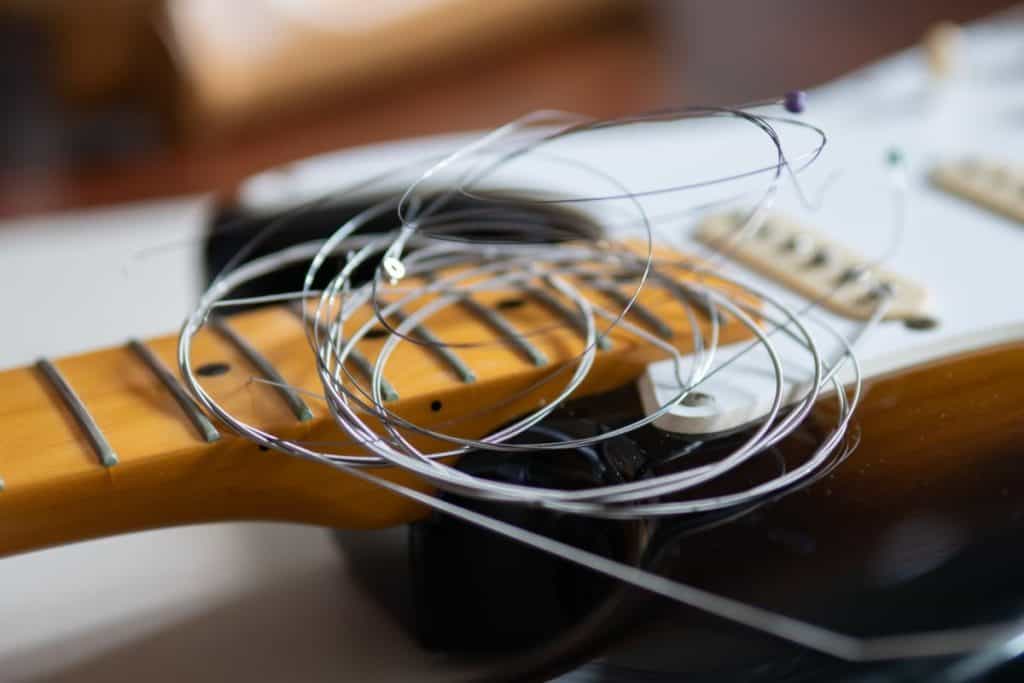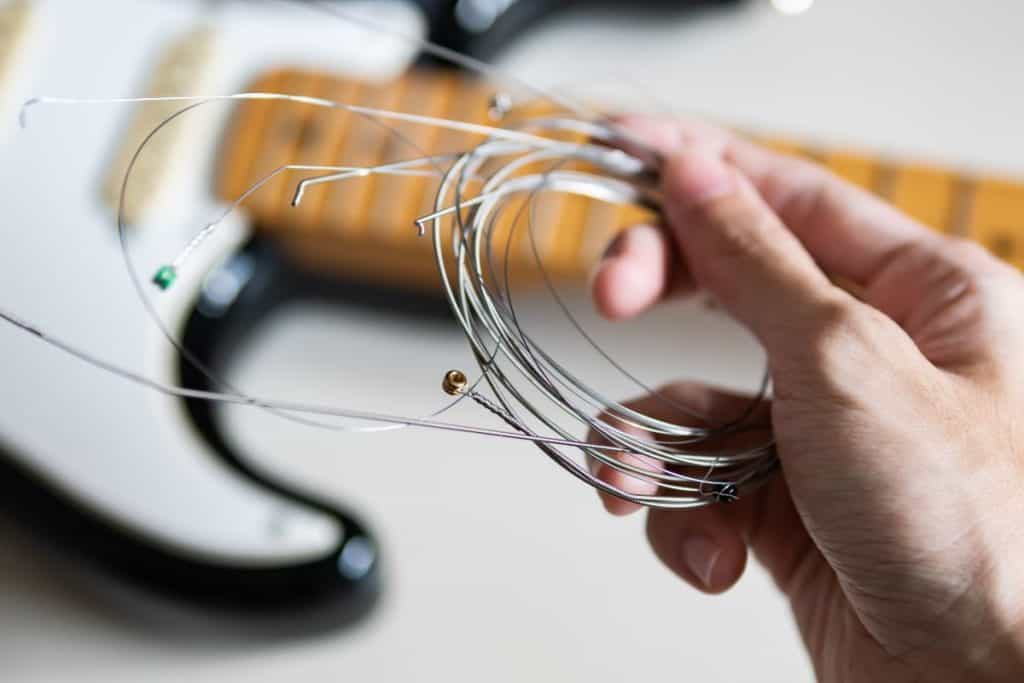The electric guitar is an instrument that seems incredibly simple at a first glance, especially if you know nothing about them. Looking incredibly simple, just a body, a neck, some string, and a bridge. And when you plug it in, it creates magic.
However, anyone with at least a little experience with guitars will tell you that electric guitars can be pretty complicated to maintain and service, especially for such a popular instrument.

Given that it is a relatively recent invention in the world of instruments, only really starting to move into the public’s attention and popularity in the early to mid-part of the 20th century, the electric guitar, by its very nature as an electrical instrument an instrument that relies on a lot of other technology for it to work at its best.
And that doesn’t just apply to all the external gear that you need for an electric guitar. Their internal wiring can also be difficult to wrap your head around.
For new guitar owners or even experienced hands, this can make trying to manage and adjust the wiring of your guitar feel like a chore that simply isn’t worth it, letting them give and simply go to a dealer or a professional repairman to get it fixed.
However, if you know what you are doing, being able to wire your guitar doesn’t just mean that you’ll be able to fix any damages it takes yourself, but it may also open up a whole new window of possibilities when it comes to guitar mods and custom wiring designs, which can take the sounds your guitar makes to the next level.
This guide will help cover the basics that you’ll need to know if you want to start wiring your guitars, as well as some ways to help make some of the most common and popular adjustments to your guitar’s wiring out there.
The Basics Of Electric Guitar Wiring
If you want to start wiring your guitar, it might help to understand how exactly an electric guitar works and operates when it comes to how it uses electricity and an amplifier to create its sounds.
This might seem completely unrelated to wiring, but once you understand what the electrical current in these instruments is doing, you will start to see how wiring affects that whole process.
Not only that, but you will also start to understand why people don’t just fix their own guitar’s wiring, but change it and make it almost unrecognizable in some cases!
When it comes to your electric guitar making sound, the voltage of your electric guitar is effectively trying to force the contact points between itself and your guitar amplifier to make contact, thereby generating that iconic sound that these instruments are known for, turning that electrical signal into noise.
The voltage difference between the ring and the tip of the jack cable your guitar’s jack plug into the amp has a different voltage, often known as ‘ground’ and ‘hot’, which helps generate the sound.
This is why, when you do play a note to an amp that isn’t turned on, you get no sound, as there is no difference in charge.
Repairing your guitar wiring is simply making sure that the charge is allowed to pass through the contact points, or altering the sound that those two contact points will create, in the case of guitar modding.
Different Wiring Setups

With electric guitars, there are plenty of wiring systems and setups that go into creating sound when plugged into an amp, with various manufacturers having different systems that they use to achieve this.
The following are some of the most common that you’ll find in electric guitars, as well as what you need to do for yourself.
Single Coil Wiring
These are some of the simplest wiring mechanisms that you will find in an electric guitar, as they have only two leads, the hot and ground contacts that we mentioned in the previous section. This also makes them relatively easy to wire for yourself!
These coils usually have 8 terminals to them, with 4 each on two separate poles.
Terminals block sin guitars helps insulate the wiring of your guitars, as well as fastening them to a fixed position so that they do not hang loose in your guitar’s internals. Each pole has a common terminal and 3 that are switched.
If you are looking to fix this, the first thing that you will need to figure out is which of those 4 are the common terminals, because the 3 switched ones only activate when they are in certain positions, whilst the common terminal is a constant.
This common terminal should be on the left side of the terminal block and will go to the volume input, whilst the three switched terminals will be connected to the pickup outputs
Humbucker Wiring
This is a very common wiring system for Les Paul style switches, are also some easier types to wire for yourself, along with single-coil systems.
The most complicated parts of this setup are the points of contact. Rather than having ‘hot’ and ‘ground’, humbucker wiring has ‘lead’, ‘out’, and ‘rhythm’, as well as ‘ground’.
These systems will connect and disconnect depending on the position they are currently in, and will have a noticeable effect on the volume levels if wired incorrectly or broken.
The lead switch connects the guitar bridge pickup to the terminal block outputs, the middle or ‘out’ position connects the pickups of both the bridge and neck to the terminal, whereas rhythm will connect only the neck, and leave the bridge unconnected.
These controls will be fed directly into the guitar’s jack, unlike other wiring setups such as strat systems, which connect to the switch output first before connecting to the jack.
Final Thoughts
As you can see, wiring an electric guitar isn’t exactly a walk in the park. And these are two of the simplest setups! However, these are a great way of learning the basics.
And, with the basic understanding of contact points, you at least have a start to ground your knowledge in (guitar-wiring pun intended).
Recent Posts
QuickTime is a vital app for many Mac users, and if you’ve recently bought a new microphone, you might wonder how to use it optimally. QuickTime cannot record audio content if it doesn’t have...
Every microphone leaves a unique signature on the quality of its output. If you’re a podcaster trying to melt your way into your audience’s hearts, a muddy, distorted recording won’t cut it....
